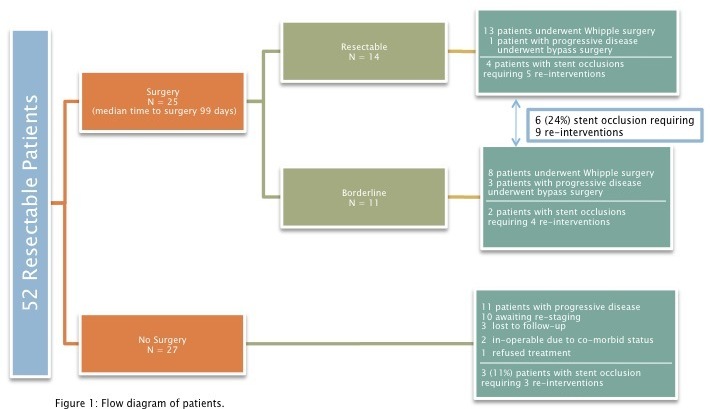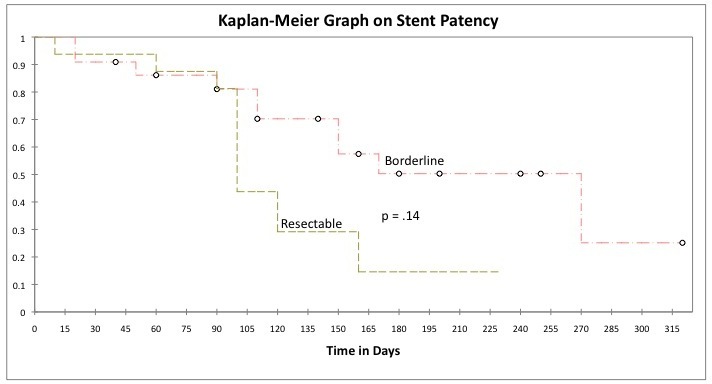Efficacy of Self Expanding Metal Biliary Stents in Patients Receiving Preoperative Chemoradiation for Resectable Pancreatic Cancer
A. Aziz Aadam*1, Abdul H. Khan1, Young OH1, Doug B. Evans2, Kulwinder S. Dua1
1Division of Gastroenterology and Hepatology, Medical College of Wisconsin, Milwaukee, WI; 2Department of Surgery, Medical College of Wisconsin, Milwaukee, WI
Introduction: Recent studies have shown a survival benefit with preoperative chemoradiation for resectable and borderline resectable pancreatic adenocarcinoma. Biliary stent occlusion as high as 60-93% in prior series* has been a major issue with plastic stents during the 2 to 4 months of neoadjuvant therapy.Aim: The aim of our study was to evaluate the patency of self-expanding metal stents (SEMS) during the pre-operative chemoradiation period.Methods: We reviewed the outcomes of consecutive patients from 2008 to 2010 with resectable, biopsy-proven pancreatic adenocarcinoma and resulting biliary obstruction. Patients were categorized as resectable or borderline resectable based on CT imaging criteria. SEMS were placed in all patients and the shortest length stent required to bridge the stricture was selected. All patients received neoadjuvant therapy. Data on demographics, stent patency, complications and re-intervention rates were prospectively collected.Results: Fifty-two (21 resectable, 31 borderline resectable) patients underwent SEMS (Wallflex, Boston Scientific, 8 covered, 44 uncovered) placement. Median time from stent placement to surgery was 99 days for all patients (resectable 83 days, borderline 133 days, p = 0.10). SEMS occlusion occurred in 6 out of 25 patients (24%) who ultimately underwent surgery and in 3 out of 27 patients (11%) who did not undergo surgery (Figure 1). No statistically significant differences in stent patency were observed between the borderline and resectable groups (Figure 2). Complications included two patients with mild pancreatitis and one patient with stent migration. The presence of SEMS did not interfere with pancreaticoduodenectomy in any patients who underwent surgery.Conclusion: SEMS should be considered to relieve biliary obstruction in patients with resectable pancreatic cancer receiving neoadjuvant therapy in view of their superior patency rates and fewer re-interventions for recurrent biliary obstruction in contrast to the historical experience with plastic stents. The presence of SEMS does not interfere with subsequent pancreaticoduodenectomy and removal prior to surgery is not required.*Mullen et al. J Gastrointest Surg 2005;9:1094-1105.*Wasan et al. Am J Gastroenterol 2005;100:2056-2061.

Back to 2011 Program



